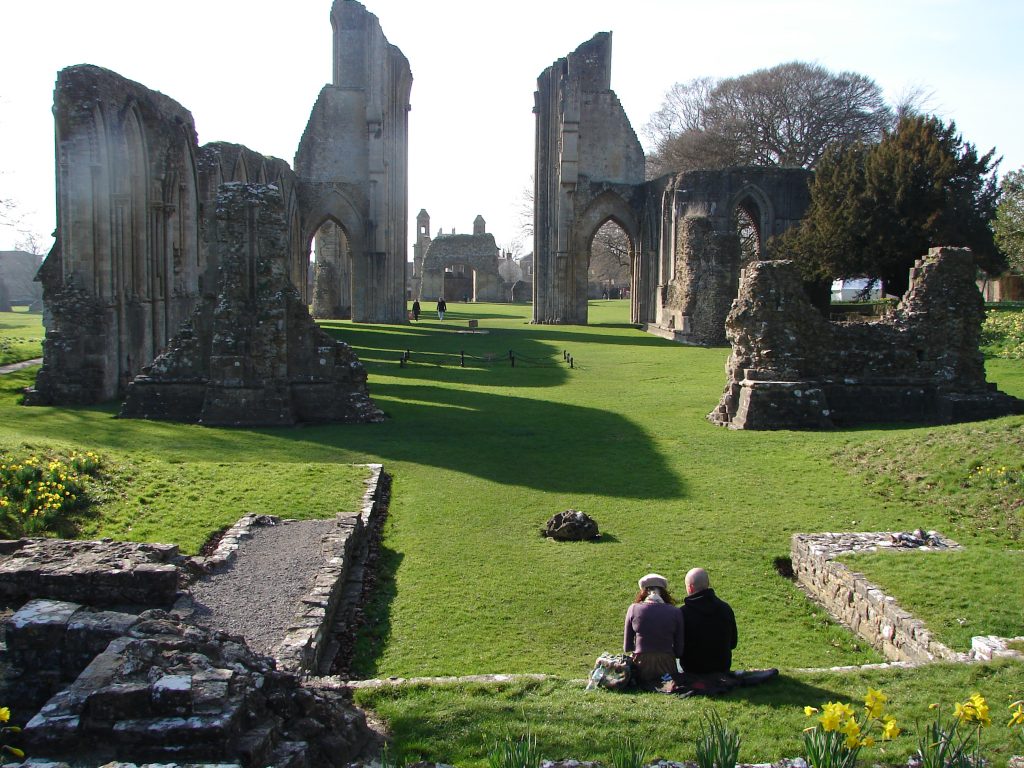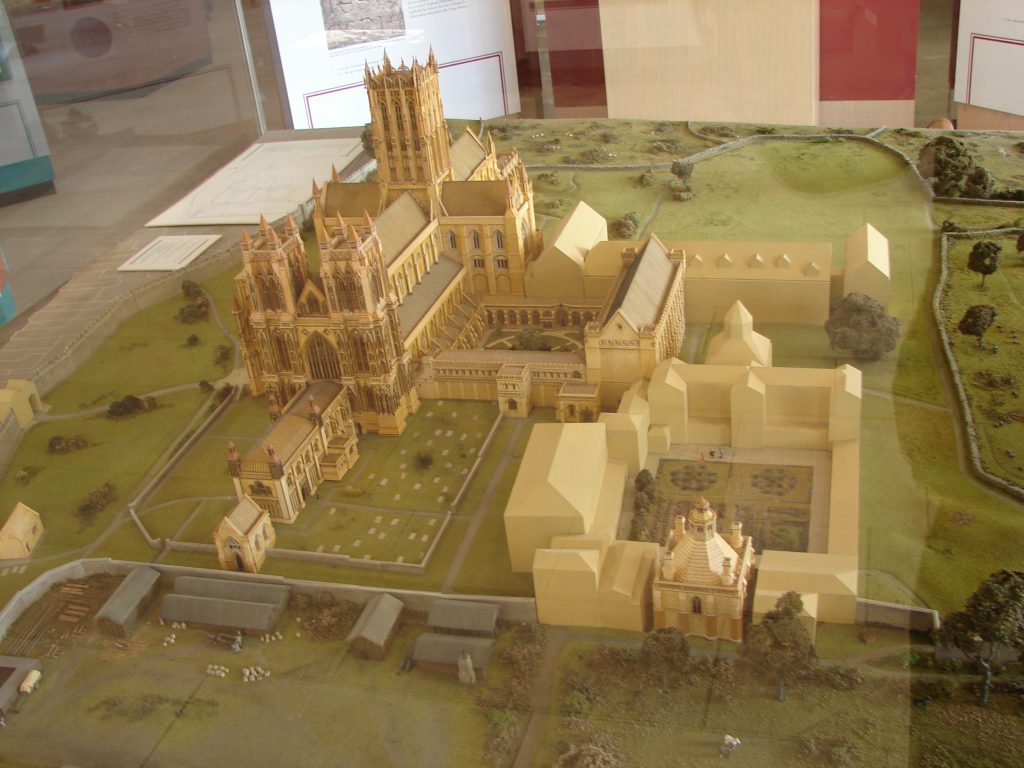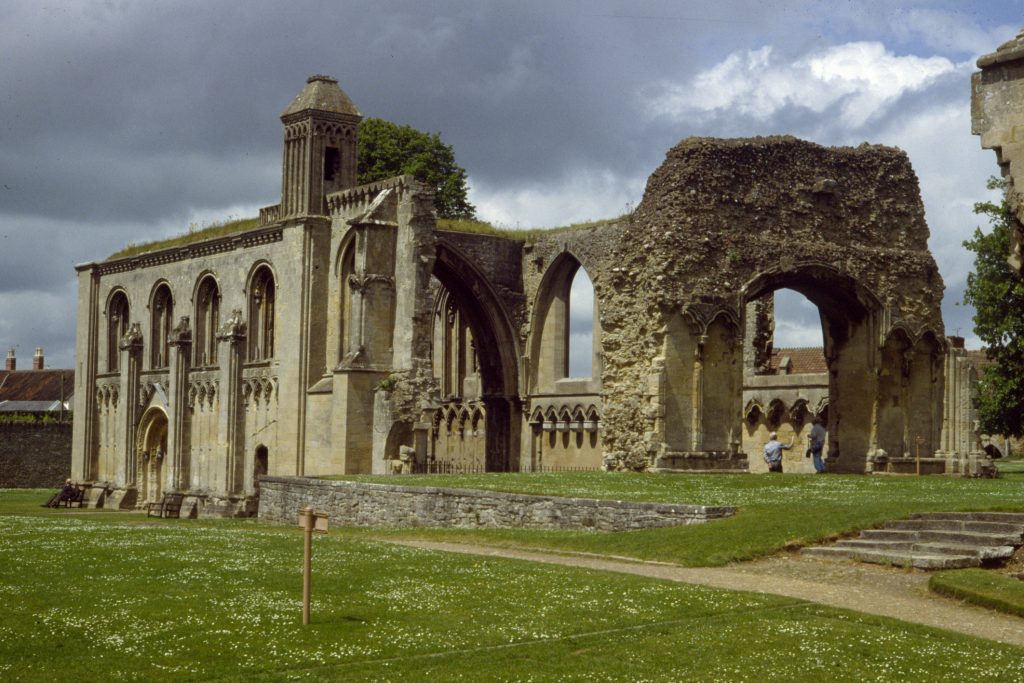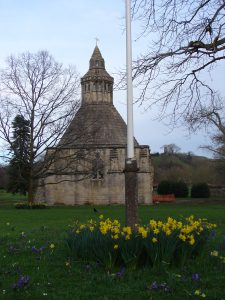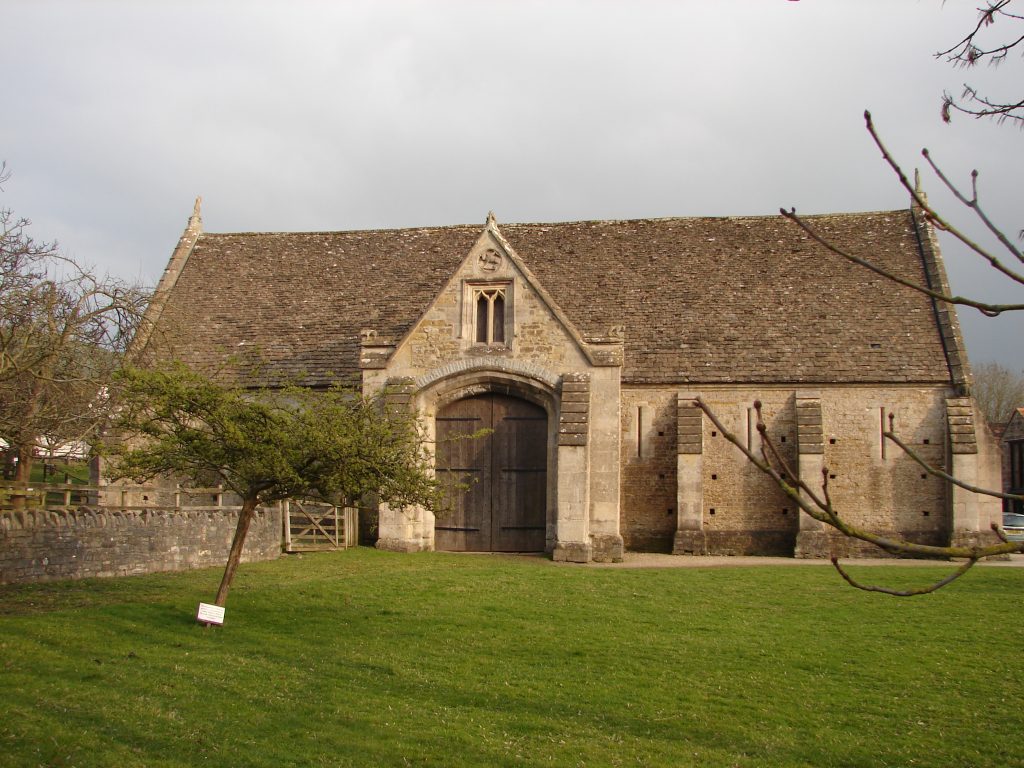In this blog, I am currently discussing the medieval church as found in my West Country Medieval Mystery Series featuring my heroine, the Lady Apollonia of Aust. I began with medieval cathedral churches and focused last month on Gloucester Cathedral which was only elevated to cathedral status more than a century after my stories. This month I would like to shift to important English monastic churches, starting with Glastonbury Abbey in this posting.
 Glastonbury Abbey plays an important role in Joseph of Arimathea’s Treasure, the fifth book in my Lady Apollonia Mysteries. This abbey was extremely important in the late 14th century, rivaling Westminster Abbey in terms of its power and wealth. The church building alone was 600 feet long. Merely a few ruins of the church and the nearby monastic buildings remain today, but the picture above shows a couple sitting at the eastern extremity of the church ruins while another couple stands some distance away at the crossing to give us an idea of the actual size of the building. Beyond them is the ruin of the west door with the small towers of the lady chapel beyond that. The picture just below shows a model of the great abbey church with its adjoining monastic buildings before the dissolution and destruction of the monasteries by King Henry VIII.
Glastonbury Abbey plays an important role in Joseph of Arimathea’s Treasure, the fifth book in my Lady Apollonia Mysteries. This abbey was extremely important in the late 14th century, rivaling Westminster Abbey in terms of its power and wealth. The church building alone was 600 feet long. Merely a few ruins of the church and the nearby monastic buildings remain today, but the picture above shows a couple sitting at the eastern extremity of the church ruins while another couple stands some distance away at the crossing to give us an idea of the actual size of the building. Beyond them is the ruin of the west door with the small towers of the lady chapel beyond that. The picture just below shows a model of the great abbey church with its adjoining monastic buildings before the dissolution and destruction of the monasteries by King Henry VIII.
The model indicates that much is known of the architecture of the church and of the Abbot’s Kitchen in the lower right corner of the picture; however, we know less about the other buildings in the immediate vicinity of the church. The Lady Chapel at the western end of the church was the oldest section, begun in the Norman Period. The picture below shows ruins of the Lady Chapel connecting on the right to the entrance of the church proper. The nave of the church ruins shows some vestiges of the Norman architecture leading into the Gothic style which dominates the rest of the church. Most of the church was built at the same time as nearby Wells Cathedral and probably shared some of the stone masons.
For background on Glastonbury Abbey, I refer you to the September 2017 archive of this blog to which a link is shown above on the right. I published four articles that month about Glastonbury, including three on the abbey dealing with its buildings, grounds, and history. You may find those an interesting supplement to this posting. Several buildings belonging to the abbey survive to the present, but within the confines of the abbey itself, only the gatehouse and the Abbot’s Kitchen remain. The Abbot’s Kitchen is shown above on the right. Two interesting surviving buildings within the town pf Glastonbury are the Tithe Barn and the Pilgrim’s Inn, now known as the George Hotel and Pilgrim’s Inn. The Tithe Barn plays a minor role in my story and is shown at the end of this posting.
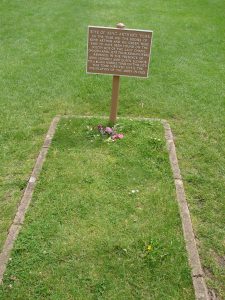 An interesting aspect of the abbey’s history was the discovery by the monks, after a great fire in 1184 AD, of what they claimed to be the remains of King Arthur and Queen Guinevere in the abbey cemetery. These remains helped stimulate the rebuilding of the church into the monumental church it had become at the time when Joseph of Arimathea’s Treasure was set. The royal remains eventually were placed in a tomb in the quire of the new church and were a great attraction for medieval pilgrims. Today, a sign in the ruins notes the final placement of those remains and is pictured on the left.
An interesting aspect of the abbey’s history was the discovery by the monks, after a great fire in 1184 AD, of what they claimed to be the remains of King Arthur and Queen Guinevere in the abbey cemetery. These remains helped stimulate the rebuilding of the church into the monumental church it had become at the time when Joseph of Arimathea’s Treasure was set. The royal remains eventually were placed in a tomb in the quire of the new church and were a great attraction for medieval pilgrims. Today, a sign in the ruins notes the final placement of those remains and is pictured on the left.
I hope to see you next month when I will continue my discussion of monastic buildings used in my stories.
